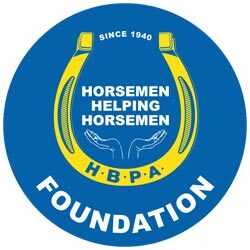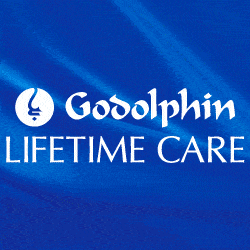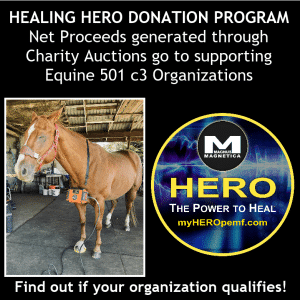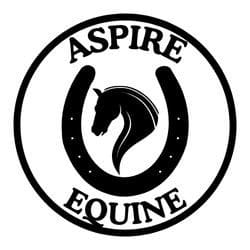The information on a feed tag can help you decide if a particular feed will help meet the objectives you have for your horse. However, nutritional details may be limited depending on how much information is presented on the tag.

Erin O’Keefe
Each individual state determines what information they require and/or allow to be listed on a feed tag and how that information is to be presented. For example, some states allow ingredients to appear in what is referred to as “group listings” such as “grain products” while other states require ingredients to be specifically listed such as “whole oats”. Obviously, when ingredients are specifically listed you have a much better idea of exactly what is in the feed. Additionally, when the tag information is printed directly on the bag and not just on a tag that is sewn onto the bag AND the ingredients are specifically listed, this is a good indication that the feed is manufactured using a “fixed formula”. Placing ingredient information only on a sewn on tag, even if the ingredients are specifically listed, gives the feed manufacturer the flexibility to change the formula based on specific ingredient availability and cost.
Keep in mind that tags can be printed on a daily basis by the feed manufacturer whereas bags are printed to order by separate bag manufacturers in very large quantities and cannot be changed quickly without significant costs being incurred by the feed manufacturer. Therefore, having the tag information printed directly on the bag demonstrates a commitment by the feed manufacturer that the feed going in the bag is consistent. Does this preclude a feed manufacturer from using a fixed formula if they do not print their tag information directly on the bag? No, but you should be confident that your feed manufacturer is using a fixed formula. Additional information not found on the bag or feed tag should be readily available on the feed manufacturer’s website.
What information is required on an equine feed tag?
1. Product name. This can be anything but should somehow differentiate the product from other available feeds.
2. Description. The description should inform you if the feed is a pellet, textured, extruded or forage product and what species it is intended for.
3. Purpose statement. Different types of horses have different nutrient requirements. The purpose statement should indicate what type of horse the specific feed is best suited for; horses at maintenance, growing horses, breeding horses or performance horses. (Note: the description and purpose statement can be combined. For example, “A textured feed for young growing horses”).
4. Guaranteed Analysis. The following nutrients are required on a feed tag for horses: Crude Protein, Crude Fat, Crude Fiber, Calcium, Phosphorus, Copper, Zinc, Selenium and Vitamin A. Any other item or nutrient included in the guaranteed analysis is provided at the feed manufacture’s discretion. Obviously, the more nutrients and items a feed manufacturer guarantees the better informed you are to decide if the specific feed meets your objectives.
5. Ingredients. The ingredient list should provide you with a complete list of all ingredients that are included in the feed with the ingredient with the greatest inclusion listed first and the ingredient with the least inclusion listed last. As noted previously, some states allow group listing while other states require actual ingredient listing. “Grain products” is a group list that may include corn, barley, oats, sorghum, wheat or other grain ingredient. “Grain by-products” is a group listing that can include corn chops, wheat middlings, and other ingredients that are produced from the milling process of any grain. I personally believe that a horse feed should not use group listings because like you, I want to know exactly what ingredients are going into my horses.
6. Feeding Directions. The feed tag should provide you with a guideline in regard to how many pounds of the feed the company expects you to feed an individual horse. Some feed products are designed to be fed at specific amounts (1 to 2 pounds or 3 – 4 pounds per horse per day, for example) while other feed products are designed to be fed at whatever rate is needed to maintain your horse in a desired body condition (5 – 15 pounds per day, for example). Be sure you check the feeding direction guidelines and follow them as closely as possible. If your horse will not maintain a desired body condition by following the feeding directions you may need a completely different feed product that is more suited to the needs of your individual horse.
7. Net weight. When comparing prices between competitive feed products be sure to check the net weight. A feed that is packaged in 40 pound bags may be cheaper per bag than a feed that is packaged in 50 pound bags but may not provide the best value.
8. Company contact information. The company name and address is all that is required to be printed on the tag but most reputable feed manufacturers will also include telephone and web site information.
Interpreting the guaranteed analysis:
As mentioned above, certain nutrients are required to be guaranteed on all equine feed products. However, some feed companies elect to provide an expanded list of guaranteed nutrients and product components in order to provide their customers with as much pertinent information as possible so they can make an educated decision in regard to which feed product is most appropriate for their horse. Keep in mind that if a nutrient or product component such as probiotics is guaranteed on the tag it is subject to being tested and verified by any state that the feed is marketed in.
Crude Protein, individual amino acids such as lysine, methionine or threonine, crude fat, crude fiber and macro minerals such as calcium, phosphorus, magnesium, sodium, potassium and salt are all listed on a percent basis. Trace minerals such as copper, zinc, manganese, iron, iodine, cobalt and selenium are listed in ppm (parts per million). Vitamins A, D and E are listed as IU (International Units) per pound and other vitamins such as thiamin, biotin, B-12 and others are listed as mg per pound (mg/lb). I have been asked numerous times how to convert these units into language that will tell me exactly how much of each nutrient I am actually feeding my horse per day.
Before we go through example calculations there are several conversion factors you will need in order to perform the following calculations correctly.
1 pound = 454 grams
1 pound = 0.45 kilograms
1 ppm = 1 mg/kg
Nutrients listed in percent:
We want to know how many grams of protein we are providing our horse when we feed 15 pounds of hay containing 8% protein and 4 pounds of feed that guarantees 12% protein. Here’s how:
15 pounds of hay times 0.08 (8 % expressed in decimal form) = 1.2 pounds of protein
4 pounds of feed times 0.12 (12% expressed in decimal form) = 0.48 pounds of protein
1.2 pounds of protein from hay plus 0.48 pounds of protein from feed = 1.68 pounds of protein total
But I want to know how many grams of protein I fed because that is how my horse’s protein requirement is listed.
Here you go – 1.68 pounds of protein times 454 grams per pound = 762.27 grams of protein.
Now use the same calculation and conversion to calculate how many grams of any nutrient listed in percent you fed your horse.
Nutrients listed in ppm:
Nutrient requirements for trace minerals such as copper or selenium are expressed in mg per day. If a feed guarantees 50 ppm copper and 0.5 ppm selenium how many milligrams (mg) of each will be supplied if we feed our horse 4 pounds per day of this feed.
Since the nutrient guarantee is expressed in ppm, this is the same thing as expressing it in mg/kg (see conversion factor above). Therefore, we must convert mg/kg into mg/lb, here’s how:
If, 1 mg/kg times 0.45 = 1 mg/lb, then 50 mg/kg times 0.45 kg/lb = 22.5 mg/lb. So 4 pounds of feed times 22.5 mg/lb copper = 90 mg copper fed.
Likewise, 0.5 ppm selenium = 0.5 mg/kg selenium. 0.5 mg/kg selenium times 0.45 kg/lb times 4 pounds fed = 0.9 mg selenium fed.
Nutrients listed in units per pound:
Vitamins are listed in either IU’s (International Units) or mg/lb. The vitamin requirements for horses are listed in these same units, therefore it is a simple calculation to determine the total amount of a vitamin fed. For example, if a feed guarantees 125 IU/lb vitamin E and you are feeding 4 pounds of this feed per day then you are feeding 125 IU/lb times 4 pounds = 500 IU of vitamin E per day.
Why do I not see a digestible energy value anywhere on the feed tag?
Most of us would find it very useful to be able to compare digestible energy levels of different feeds to see which one is best suited to either help put weight on a horse or for that matter to help keep extra weight off a horse. Digestible energy is not a nutrient per se, but is a characteristic of any feed we provide our horse. State regulatory laboratories cannot accurately measure the digestible energy content of a feed product, therefore digestible energy guarantees are not listed on feed tags. Generally speaking, feeds with higher fat guarantees and lower fiber guarantees are going to contain more digestible energy per pound, but these parameters only provide a rough estimate and do not accurately provide a reliable digestible energy content of any particular feed.
Additionally, different quality ingredients are going to contain different amounts of digestible energy. For example, you note that the first ingredient listed on your feed tag is whole oats. Unfortunately, you do not know from the information provided on the tag if those oats weigh 32 pounds per bushel or 40 pounds per bushel. A feed manufactured with oats that weigh 40 pounds per bushel is going to contain more digestible energy per pound than a feed manufactured using the exact same formula but uses oats that only weigh 32 pounds per bushel. At the end of the day, it is best to compare digestible energy content of different feeds within a single feed manufacturer since they are most likely using the same calculations to determine the digestible energy content of all their different feed products. There is a very good chance that two different feed companies will use different calculations to determine the digestible energy content of their feed products. Therefore comparing the digestible energy of company A’s feed to company B’s feed may be similar to comparing apples and oranges. Yes, this is frustrating, but it is what it is at the current time.
In part 2 of Reading A Feed Tag we will discuss guaranteed analysis and specific ingredients in more detail.










